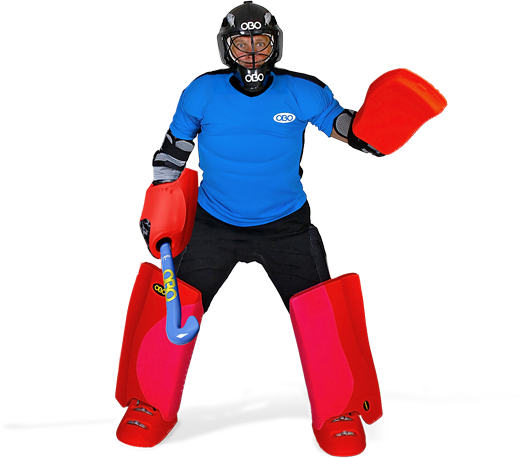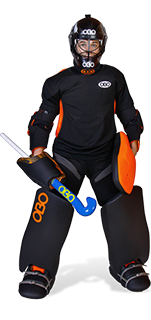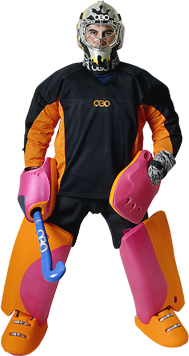KEEPERS RESOURCES

Setting up deep at penalty corners
Watching top level domestic and international hockey, you will notice goalkeepers setting up deep within their D against penalty corners. Most of the Hoofdklasse goalkeepers do this, as do the goalkeepers in the English national premier league, for example, as can be evidenced from footage on YouTube! As the drag flick has become more prevalent, so have goalkeepers (as amazing as they are!) adapted to the shooter’s tendencies by changing the way they face penalty corners.
The following clip is an example of this (around 2:38 playing time and later), with Beeston’s George Pinner, who stays deep in his D against corners, demonstrating the technique and also the dangers of setting up versus deflections and well rehearsed routines:
http://www.youtube.com/watch?v=OHfa5dfuZVg
Why?
The reason goalkeepers play deeper against a shooter during penalty corners comes down to reaction speeds. With the speed of a fast drag flick coming at the goalkeeper, by staying deep, the goalkeeper has more time to react. The faster the flick, the quicker the goalkeeper needs to be. If they were further out, they would arguably have less time to react and so would be beaten more easily (theoretically!). Instead, by standing as close to the goal line as possible they increase the reaction time i.e. they give themselves longer to react and make their selection of technique (diving, doing the splits to stop the ball with the kicker etc.) to stop the ball.
How?
This is fairly obvious and is almost self explanatory! As you step out from behind the goal line as the injector pushes the ball out, you take a small step forward. Rather than taking two or three larger steps as you would normally do for challenging the shooter more, simply take a small step out so you are close to the goal line. Some goalkeepers stand so they are almost literally on the goal line, but it depends on how you want to play the situation. As you move up levels of play or are starting to face drag flicks for the first time, you can adjust to your normal positioning by taking a step or two back from your normal set-up. Practise will help you work things out, but personal preference will probably define how you set up.
Watch how Whitchurch’s goalkeeper (the one in orange!) sets up on penalty corners, demonstrate how this technique works:
http://www.youtube.com/watch?v=MkEFknB9xf0
Reacting quickly
Watching the flight of the ball as it comes in, the goalkeeper has to react athletically to reach and extend to the top or bottom corners of the goal which are more visible for the flick taker due to the goalkeeper’s deep positioning. Due to the goalkeeper’s deep positioning in the D, there is more shooting space visible to the shooter as a result of not challenging the angles. Whilst the deep positioning is helpful for reaction times, the goalkeeper consequently has to react more athletically, exploding into the save and stretching out to reach the space that has been left exposed. When watching goalkeepers stop shots like this when facing penalty corners, you will notice how they will often dive into the save in order to reach the ball.
The following clip at around 1:52 shows the goalkeeper react well athletically to stop the ball deep in the D:
http://www.youtube.com/watch?v=hz2-2JPdphI
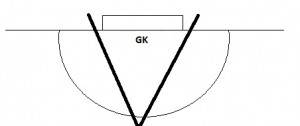
Using the technique
Goalkeeping can often come down to knowing what to do when. In the case of the technique, if you’re going to be facing a lot of drag flicks, then you are likely to be setting up close to the line as standard if you prefer to react rather than challenge. However, if you do not trust your ability to athletically stop a flick, and prefer to aggressively challenge with your positioning, then this might not be for you. Trying things out and keeping your options open however will give you more ways to keep the ball out of your goal at the end of the day!
Comments
Leave Your Comments Below

















